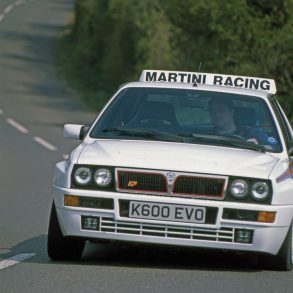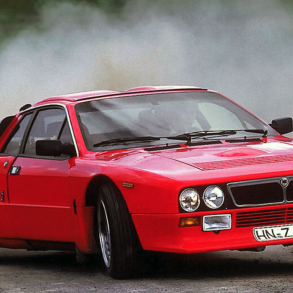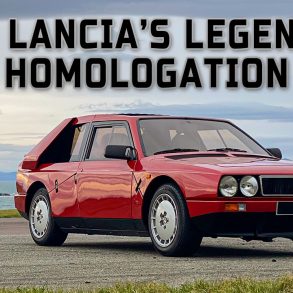Lancia D50
Car: Lancia D50 / Engine: 90º V8 / Maker: Lancia / Bore X Stroke: 73.6 X 73.1 mm / Year: 1955 / Capacity: 2,488 cc / Class: Formula 1 / Power: 250 bhp at 8,100 rpm / Wheelbase: 2,280 mm Track: Front: 1294 mm Rear:1330 mm / Weight: 620 kg (1,367 lb)


The car designed by Jano was quite ambitious in design and in many ways more advanced than the W196 of Mercedes. The four-camshaft V8 was used as a stressed member in conjunction with a tubular space-frame chassis. The engine was offset with the propeller shaft running to the left of the driver. The most visually striking aspect of the car were the twin pannier-type fuel tanks located on faired outriggers between the wheels. Jano’s objective was two fold, improved airflow between the wheels and a constant weight distribution as the fuel was consumed during the race. Output for the V8 was a reputed 260 bhp, 3 more than the Mercedes-Benz while the Lancia enjoyed a 280 lb weight advantage.
A vast expenditure for such a small company was lavished on the new racing team as evidenced with the signing of the top Italian driver Alberto Ascari. Initially planned for the 1954 season they did not debut until the last race at the Spanish Grand Prix in Barcelona. In the hands of double World Champion Alberto Ascari the car was fastest in practice. In the race Ascari passed into the lead on lap three setting the fastest lap in the process before retiring due to clutch problems. All seemed set for the next season and the battle with Mercedes.

Photograph by Jessie Alexander
With the withdrawal of Mercedes the path was clear for the Lancia/Ferrari to win the championship. The D50 while going a long way to bolstering Ferrari’s flagging efforts was still looked upon as an alien design and Jano’s relationship with Ferrari was strained. Further development of many of the key features in the D50 was abandoned and sadly most vestiges of the original car were soon erased.


















